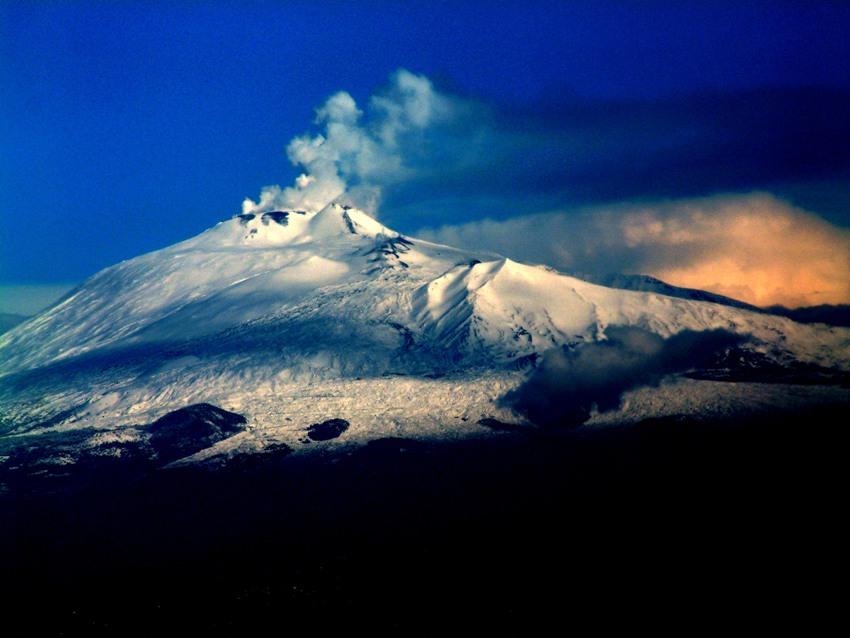- News
- Reviews
- Bikes
- Components
- Bar tape & grips
- Bottom brackets
- Brake & gear cables
- Brake & STI levers
- Brake pads & spares
- Brakes
- Cassettes & freewheels
- Chains
- Chainsets & chainrings
- Derailleurs - front
- Derailleurs - rear
- Forks
- Gear levers & shifters
- Groupsets
- Handlebars & extensions
- Headsets
- Hubs
- Inner tubes
- Pedals
- Quick releases & skewers
- Saddles
- Seatposts
- Stems
- Wheels
- Tyres
- Tubeless valves
- Accessories
- Accessories - misc
- Computer mounts
- Bags
- Bar ends
- Bike bags & cases
- Bottle cages
- Bottles
- Cameras
- Car racks
- Child seats
- Computers
- Glasses
- GPS units
- Helmets
- Lights - front
- Lights - rear
- Lights - sets
- Locks
- Mirrors
- Mudguards
- Racks
- Pumps & CO2 inflators
- Puncture kits
- Reflectives
- Smart watches
- Stands and racks
- Trailers
- Clothing
- Health, fitness and nutrition
- Tools and workshop
- Miscellaneous
- Buyers Guides
- Features
- Forum
- Recommends
- Podcast
news
 Mount Etna/Josep Renalias, Wikimedia Commons.JPG
Mount Etna/Josep Renalias, Wikimedia Commons.JPGGiro d'Italia: Organisers play down fears over Sunday's Mount Etna stage
Organisers of the Giro d’Italia have been quick to play down fears that Sunday’s Stage 9 which features a twin ascent of Mount Etna is in jeopardy following a upsurge in activity by the volcano.
Today’s Stage 7 takes the race within sight of Italy’s other famous volcano, Mount Vesuvius outside Naples, as it heads towards a summit finish at Montevergine di Mercogliano.
Mount Etna then looms on Sunday following what should be a sprinter-friendly run down the Tyrrhenian coast on Saturday.
While it is expected that the fight for the general classification will erupt in earnest this weekend - not least because the stage start in Vincenzo Nibali's home city of Messina with the Sicilian likely to enjoy huge support - less anticipated is the fact that Sicily’s famous volcano is doing likewise.
Yesterday, however, the area suffered an earthquake of 3.1 magnitude, followed by an ash cloud forming and settling over the nearby city of Catania, and over a section of road due to be used on Sunday’s stage.
However, it’s not expected that the current activity on Etna will affect Sunday’s Giro stage, other than perhaps preventing TV helicopters from taking to the air should the ash cloud persist. In the meantime, of course, race organisers are monitoring the situation closely.
Indeed, race director Angelo Zomegnan was keen to play down the situation, saying: ”The stage is not at risk. The section of road incolved is only he final four kilometres. But there are already local work crews on site, who are clearing dust from the road. We’re calm about it.”
Unlike Vesuvius, which is characterised by periodic but violent eruptions, including that which buried Pompeii in 79AD, Etna is subject to less severe but near continual volcanic activity, although that which is currently being experienced is higher than normal.
Vesuvius, meanwhile, last erupted in 1944 and is currently experiencing its longest period of dormancy in nearly 400 years.
While I always have lights on day and night and wear fluro, I have a friend that wears all black all the time and doesn't use lights ever. His...
A sad case, and one with no winners. The driver can thank her lucky stars that the cyclist wasn't more seriously injured and that the court was...
Bloody hell... How are you doing now?
And I liked endura too. Got a nice long sleeve mostly merino long sleeve a little while back, in orange.
No, the Ebay lights have been around for several years, this Lezyne light just appeared.
They shouldn't worry - the second part of the "tariff" refrain is "they can make it in US and they'll do very well".
"At the going down of the sun, it will get in our eyes and cause us to crash into things."
Been living in the area thirty years now and Brixton Cycles (and local riders wearing their famed Rastafarian colours jersey) has been an iconic...
Indeed - but again these are perhaps questions we should keep asking. Even if the immediate answer is "well we are where we are" or "how on earth...